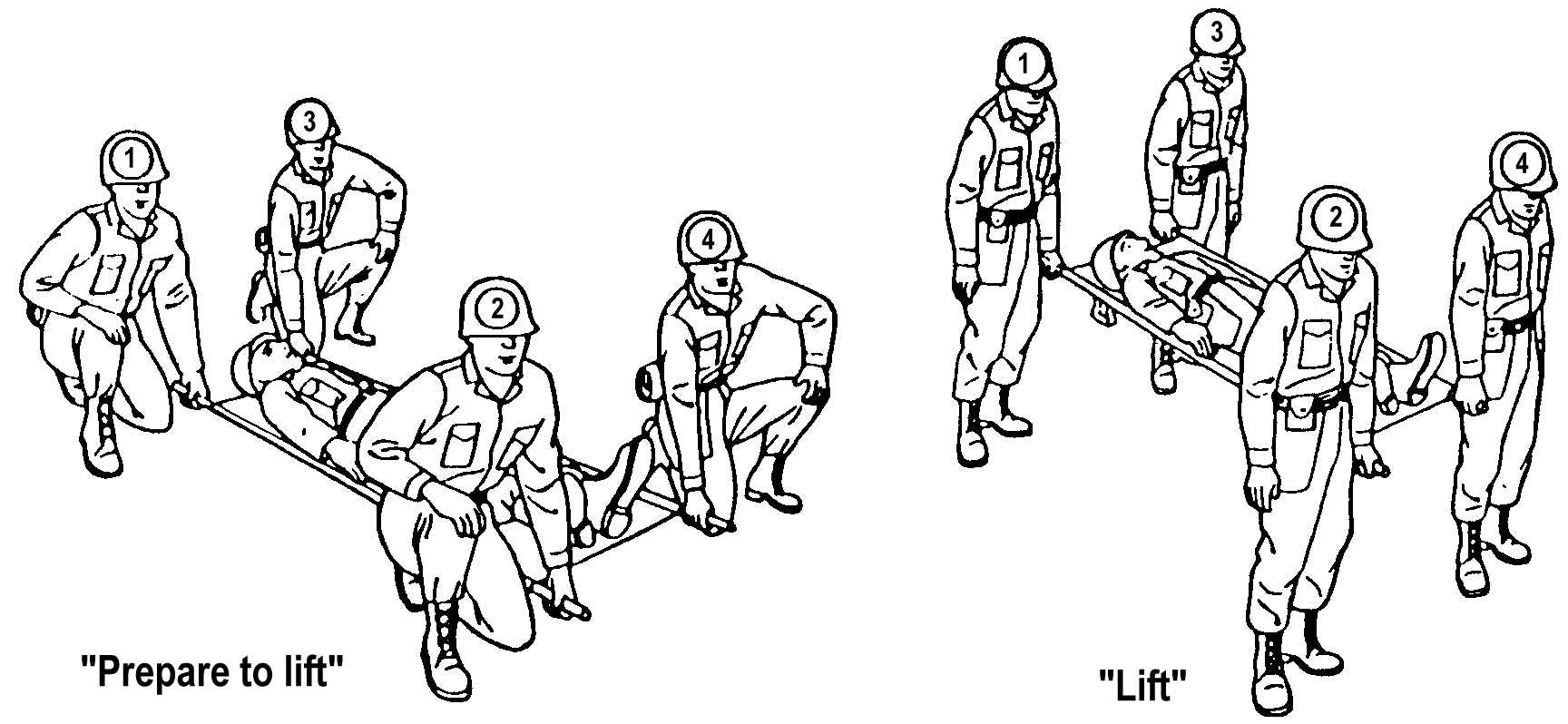
LESSON 24
Part 1
TRANSPORT A CASUALTY USING
A MILITARY VEHICLE
TASK
Identify procedures for moving casualties by litter and loading and unloading casualties using military vehicles.
CONDITIONS
Given multiple-choice items pertaining to evacuation.
STANDARD
Score 70 or more points on the 100-point written examination.
REFERENCES
FM 8-10-6, Medical Evacuation in a Theater of Operations: Tactics, Techniques, and Procedures.
FM 8-35, Evacuation of the Sick and Wounded.
24-1. INTRODUCTION
As a combat lifesaver, you may need to evacuate or assist the combat medic in evacuating casualties. Moving a casualty using one-man and two-man manual carries, making improvised litters, and placing a casualty onto a litter were covered in IS0824. This lesson covers moving a casualty on a litter, loading casualties onto military ground and air vehicles, and unloading casualties. The major objectives are load and to move a casualty without causing additional injury to the casualty or injuy to the CLS or medic.
24-2. DETERMINE THE ORDER IN WHICH CASUALTIES ARE TO BE EVACUATED
The number of casualties may exceed the evacuation capabilities. You may need to decide which casualties are to be moved first if the number of litter teams is limited or if the vehicle cannot transport all of the casualties at the same time. The priority of the casualty's evacuation depends upon wounds and condition. If a combat medic is not present, use the following general rules to determine evacuation priority.
a. First Priority
Casualties with conditions that could affect life, limb or eyesight should be evacuated first. These conditions include serious respiratory problems; severe blood loss; second and third degree burns of the face, neck, or perineum; closed head injuries with decreasing mental status; and wounds resulting in poor or no circulation (pulse) in the extremity.
b. Second Priority
Casualties with chest and abdominal wounds, extensive serious eye injury, fractures, and serious second and third degree burns not involving the face, neck, or perineum should be evacuated next.
c. Third Priority
Casualties with minimal injuries (injuries stabilized with self-aid or buddy-aid) and casualties with injuries so severe that only complicated and prolonged treatment could prolong life-expectancy should be evacuated last. This category is used only when evacuation resources are limited. If you are in doubt as to the severity of the injury, place the casualty in one of the other categories.
After you have established a general priority of evacuation, determine which casualties are to be evacuated first. For example, suppose you can evacuate only two litter casualties at a time and you have four litter casualties (one in the first category, two in the second category, and one in the third category). You should evacuate the casualty in the first category and the more seriously injured casualty in the second category first. Evacuate the two remaining casualties when the vehicle or litter teams return.
24-3. MOVE A CASUALTY USING A FOUR-MAN LITTER SQUAD
When possible, casualties who cannot or should not walk are evacuated using a standard aluminum litter and a four-man litter squad.
a. Preparing the Litter
Open the litter and lock the spreader bars (one at each end of the litter) into place. Use your foot to lock the bars into place to prevent possible injury to your hands.

FIGURE 24-1. FOUR-MAN CARRY
b. Preparing the Casualty
Place the casualty on the litter and secure him to the litter with straps designed for this purpose.
c. Preparing the Four-Man Litter Squad
The leader of the litter squad is normally the person with the most medical training. If a combat medic is not available, the combat lifesaver should act as the squad leader. The squad leader normally positions himself at the casualty's right shoulder, which is the best position for monitoring the casualty's condition.
d. Lifting the Litter
The leader must ensure that all of the bearers act in unison. This can be done by using preparatory commands (commands that tell the other bearers the actions to be performed) and commands of execution (commands that tell the other bearers to perform the action). For example, the command to lift a litter is "Prepare to lift, LIFT." On the preparatory command "Prepare to lift," each bearer kneels beside his litter handle and grasps the handle. On the command "LIFT," all bearers rise together. The command to move forward is "Four-man carry, MOVE." The command to lower the litter is "Lower, LITTER."
Lift the litter in a smooth and even manner and keep it as level as possible at all times.
If the terrain is level, use the four-man carry.
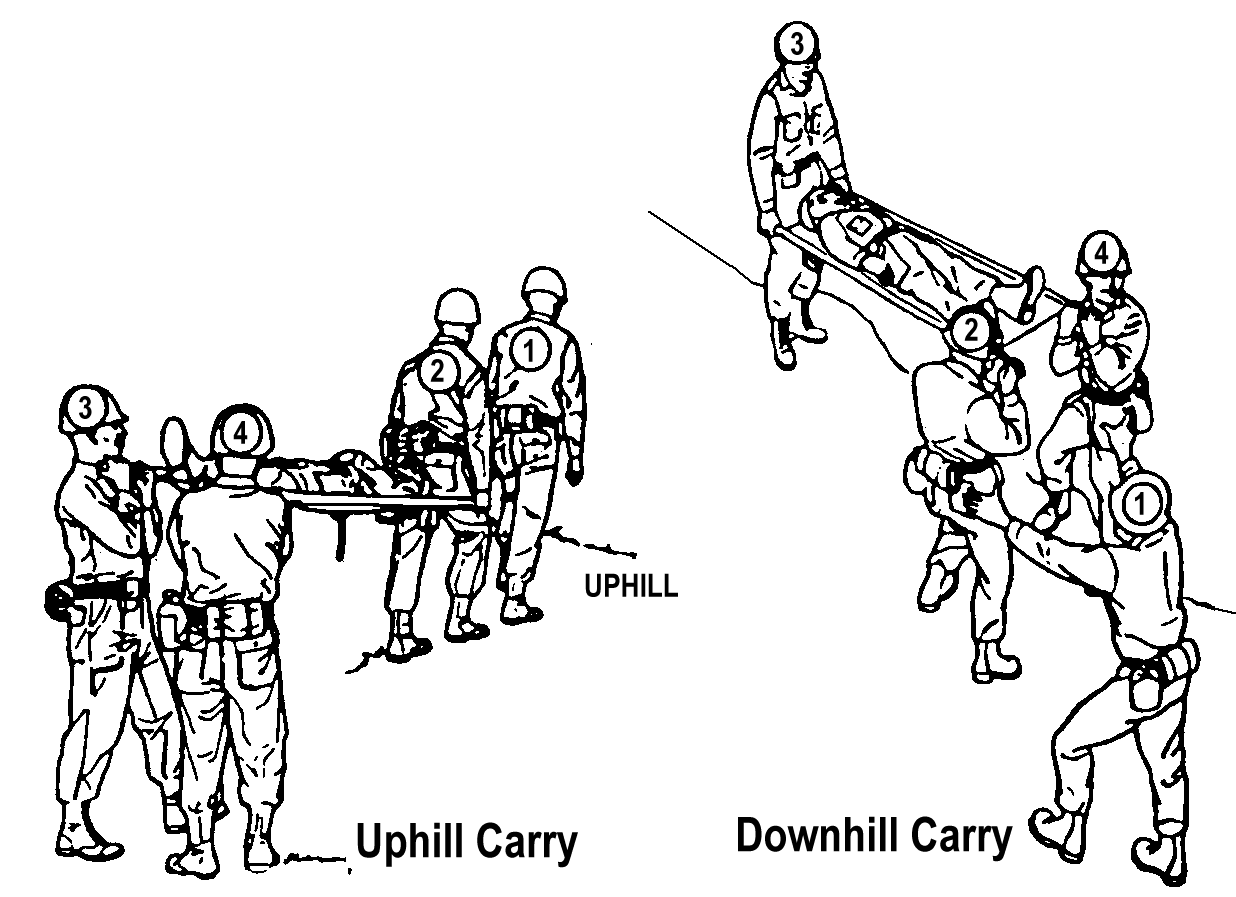
FIGURE 24-2. UPHILL AND DOWNHILL CARRIES
e. Uphill Carry
Use the uphill carry to go up a hill or stairs and the downhill carry to go down a hill or stairs.
f. Downhill Carry
Under normal conditions, the casualty is moved "feet first" (feet toward the direction of travel) when traveling on level ground or when going down a hill or stairs. When going up a hill or stairs, the casualty is moved "head first" (head toward the direction of travel).
CAUTION: If the casualty has a leg fracture and does not have a head injury, reverse the direction of travel. Move the casualty "head first" when traveling on level ground or going downhill and carry the casualty "feet first" when going uphill. This reversed position helps to keep pressure off the leg fracture.
WARNING
Do not reverse the direction of travel if the casualty has a head injury. Doing so would put unnecessary and dangerous pressure on the casualty's head.
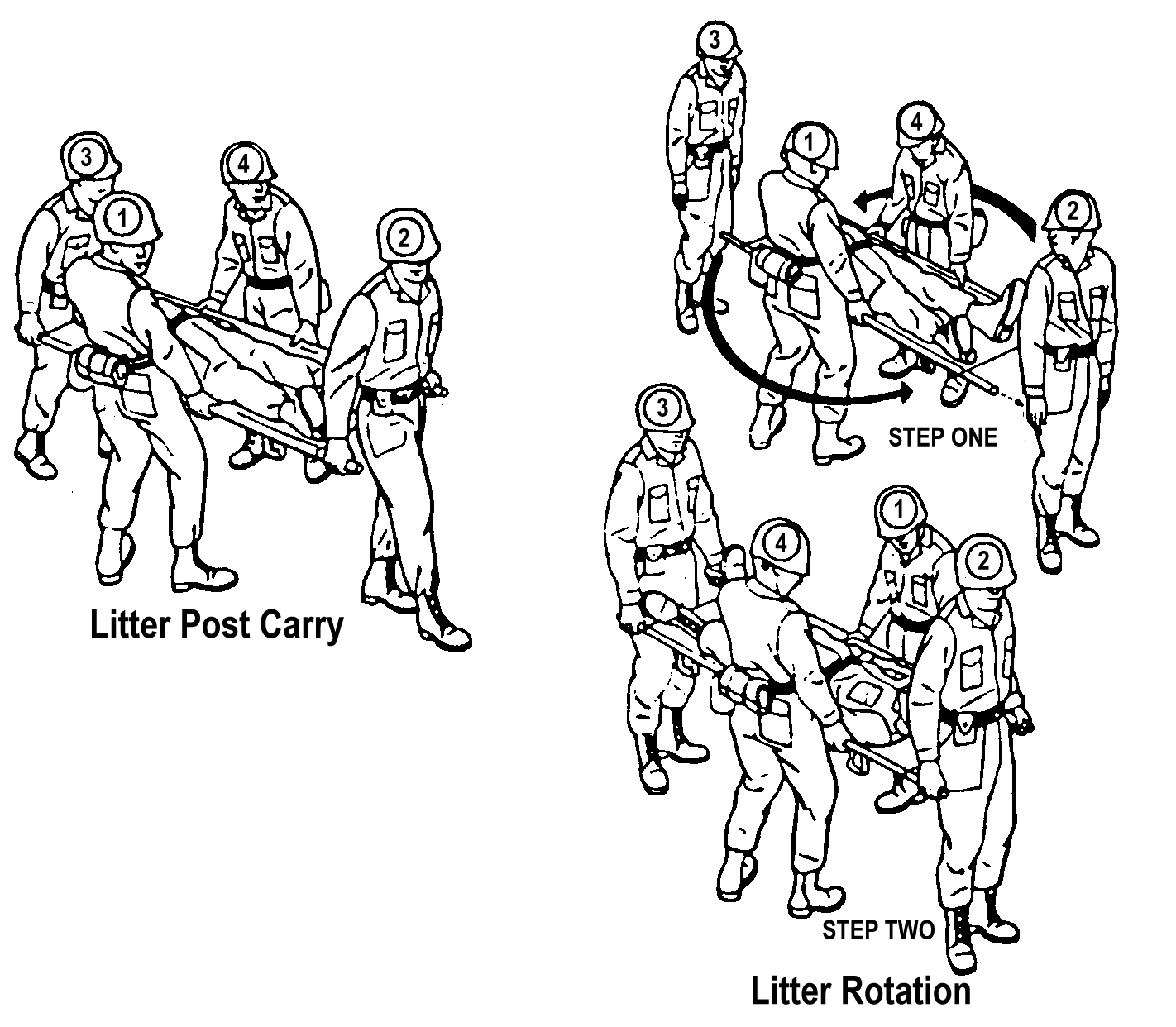 FIGURE
24-3. LITTER POST CARRY AND LITTER ROTATION
FIGURE
24-3. LITTER POST CARRY AND LITTER ROTATION
g. Litter Post Carry
If the terrain is very rough, use the litter post carry to keep the litter level.
h. Litter Rotation
The litter post carry position is also used to rotate the litter, such as going from a downhill carry to an uphill carry. To change direction of movement, such as from feet first to head first, begin in a litter post carry position. The front and back bearers release the litter and the middle bearers rotate the litter and themselves.
24-4. LOAD CASUALTIES INTO GROUND AMBULANCES
Casualties are usually evacuated by a medical ground vehicle (ground ambulance), by a medical helicopter (air ambulance), or by a nonmedical military vehicle (military vehicle which is not designed to carry litter casualties).
Ambulances have a medical specialist as the driver and another medical specialist to take care of the casualties during evacuation. Follow their instructions for loading, securing, and unloading casualties.
a. General Rules
A litter casualty is usually loaded with his head toward the front of the vehicle unless the medic staying with the casualties wants the casualty loaded feet first so his wound will be more accessible.
When loading casualties into a vehicle, load the most seriously injured casualty last.
Make sure that each litter casualty is secured to his litter. Use litter straps when available.
Make sure that each litter is secured to the vehicle.
Unload casualties in the reverse order in which they are loaded. Unload the most seriously injured casualty first.
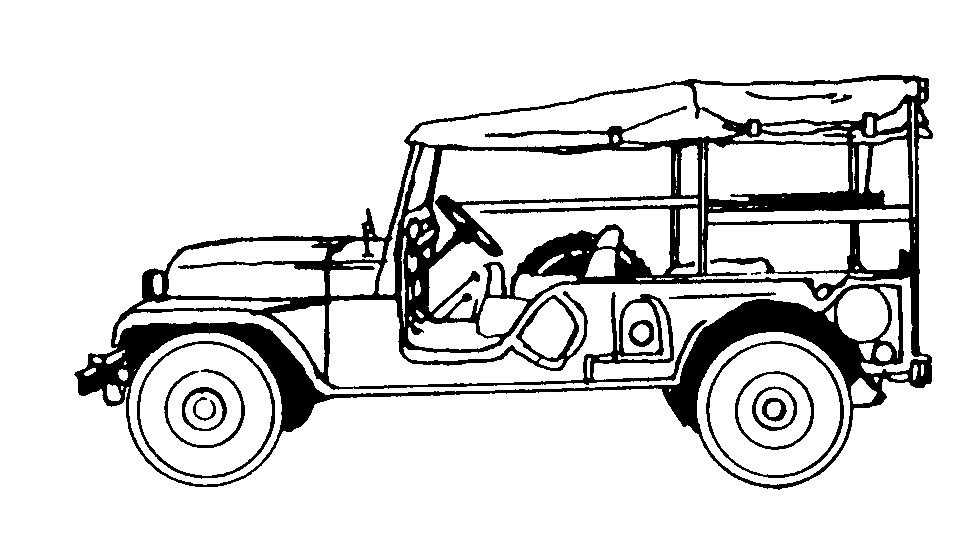 b. Load Casualties into
an M1010, 1 1/4-Ton, 4x4, Truck Ambulance
b. Load Casualties into
an M1010, 1 1/4-Ton, 4x4, Truck Ambulance
![]()
FIGURE 24-4. M1010 AMBULANCE (1 1/4 ton)
The M1010 truck ambulance is designed to carry four litter casualties or eight ambulatory casualties or a mixed load of two litter casualties and four ambulatory casualties.
When four litter casualties are transported, they are loaded in the following order:
Upper right berth.
Lower right berth.
Upper left berth.
Lower left berth.
When only two litter casualties are loaded, the sequence is:
Upper right berth.
Lower right berth.
Ambulatory casualties (on left side).
If there is only one litter casualty, load him on either the upper or lower right berth.
c. Load Casualties into an M996, 4x4, Armored Ambulance (HMMWV)
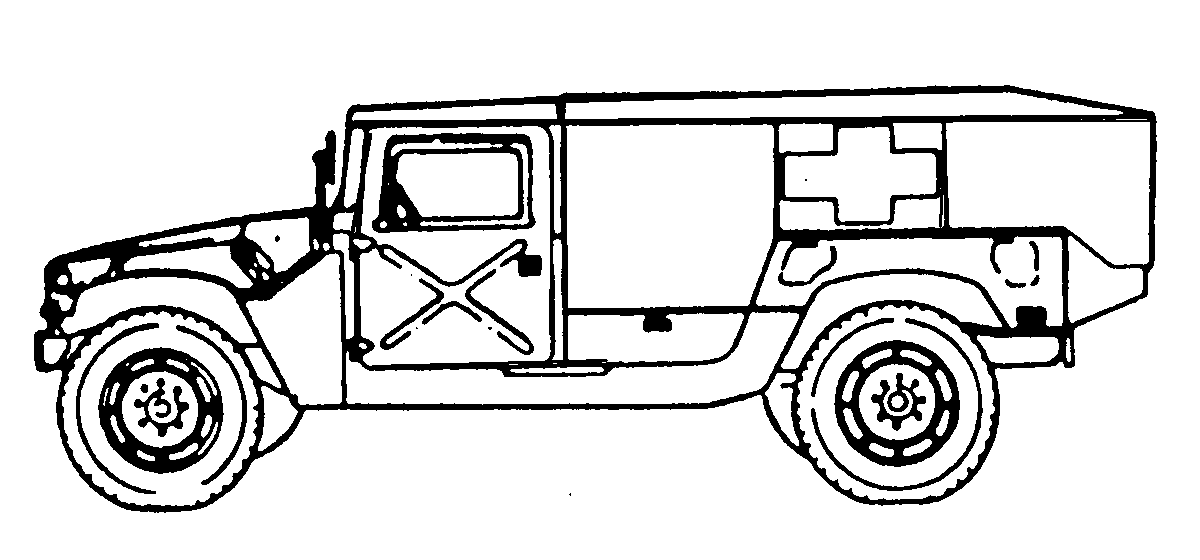
FIGURE 24-5. M996 ARMORED AMBULANCE
The M996 armored ambulance is designed to carry two litter casualties, or six ambulatory casualties, or a mixed load of one litter casualty and three ambulatory casualties.
When two litter casualties are transported, the first casualty is placed in the right berth and the second casualty in the left berth.
d. Load Casualties into an M997, 4x4, Armored Ambulance (HMMWV)
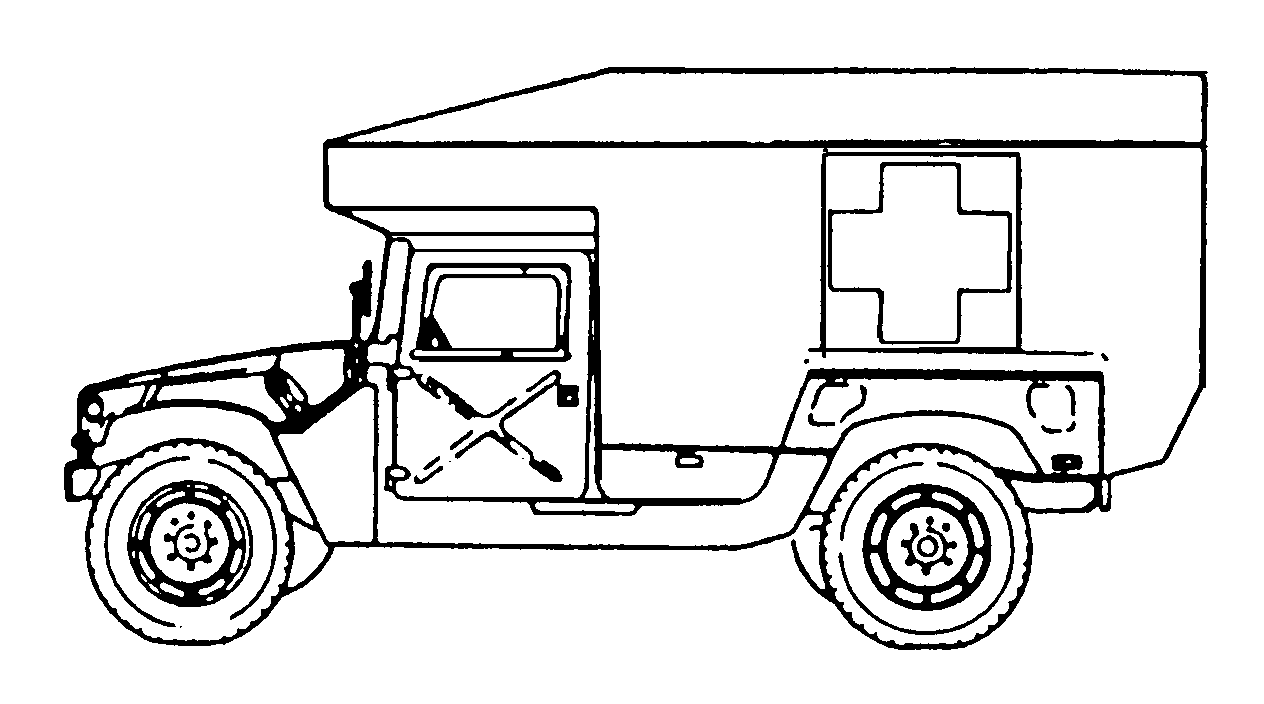 FIGURE
24-6. M997 ARMORED AMBULANCE
FIGURE
24-6. M997 ARMORED AMBULANCE
The M997 armored ambulance is designed to carry four litter casualties or eight ambulatory casualties or a mixed load of two litter casualties and four ambulatory casualties.
When four litter casualties are transported, they are loaded in the following order:
Upper right berth.
Lower right berth.
Upper left berth.
Lower left berth.